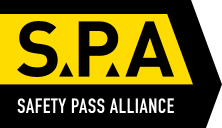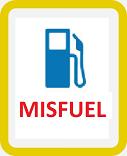Since the new sentencing guidelines were introduced in February 2016, health and safety failings have become increasingly expensive for construction companies, who must also keep on top of changing regulations. Ian McKinnon offers a solution.

While prioritising health and safety is a moral obligation for any organisation, it also makes good business sense, especially as the cost of getting health & safety wrong continues to rise.
Impact of legislation
Since the introduction of the new sentencing guidelines for health and safety offences in February 2016, which set out to ensure it wasn’t “cheaper to offend than to take the appropriate precautions”, fines for health & safety offences have skyrocketed.
The average fine per conviction pre-guidelines in 2015/16 was £57,735, while the average fine per conviction in 2018/19 soared to £107,000.
In the construction industry in 2018/19, there were 158 prosecution cases with 146 (92%) resulting in a conviction for at least one offence and a total of £15.7million in fines. Million-pound fines are now commonplace and, notably, since the introduction of the guidelines, a death no longer needs to occur for large fines of over £1m to apply. What’s more, it is now the risk of harm that is recognised as the offence so increasingly large fines are being handed down without any actual harm taking place.
Indirect costs
If hefty and rising fines aren’t enough of a cause for concern, indirect costs of health and safety failings must also be taken into account.
The Royal Society for the Protection of Accidents (RoSPA) suggests most organisations do not know what accidents and ill-health really cost them in time and money with a common misconception being that most accident and incident costs are recoverable through insurance.
Uninsured costs to consider include: the cost of incident investigation; business disruption; project delays; legal costs; repairs to plant & equipment and sick pay; extra wages and temporary labour. The impact of reputational damage can also be significant resulting in a loss of new or repeat business and deterring investment.
Cost to the economy
There are also implications of health & safety failings for the economy at large. Around two million working days were lost in construction each year between 2016/17 and 2018/19 with 19% due to workplace injury and 81% due to work-related illness. The total cost to the economy of workplace injury and new cases of work-related ill health in construction in 2018/19 is estimated at £1.2bn which accounts for 8% of the total cost.
Managing the supply chain
With the construction industry characterised by a large number of contractors and sub-contractors, one of the most challenging aspects of managing health and safety in the sector is ensuring compliance throughout the supply chain. Anyone engaging contractors has health and safety responsibilities, both for the contractors and anyone else that could be affected by their activities. Therefore a contractor assessment process needs to be in place.
Companies can carry out contractor assessment themselves but constantly changing rules and regulations make it a complicated and costly process so it is rarely efficient or effective for them to do so. This is where third party accreditation bodies such as CHAS come in. For example, CHAS’s alert system notifies contractors when insurance policies and health and safety qualifications are about to expire helps to ensure contractors’ qualifications are up-to-date.
CHAS recently introduced its Common Assessment Standard (CAS) available which offers businesses a single, complete risk management solution. Led by Build UK and the Civil Engineering Contractors Association (CECA), the Common Assessment Standard replaces a multitude of prequalification schemes with a simplified process based on a single industry-agreed questionnaire. Over 30 of the construction industry’s biggest names have announced their support for the scheme since it was launched in May 2019.
Ian McKinnnon is managing director of CHAS.
Construction Manager



















